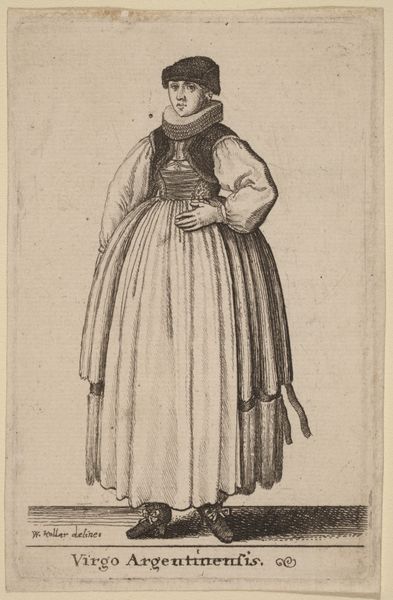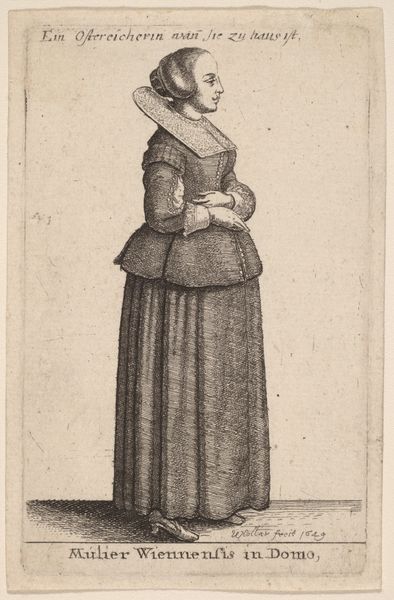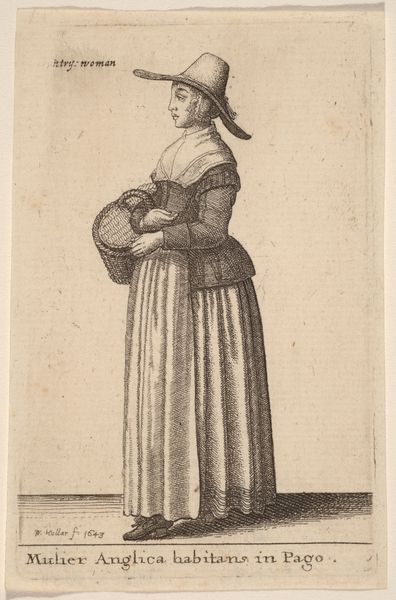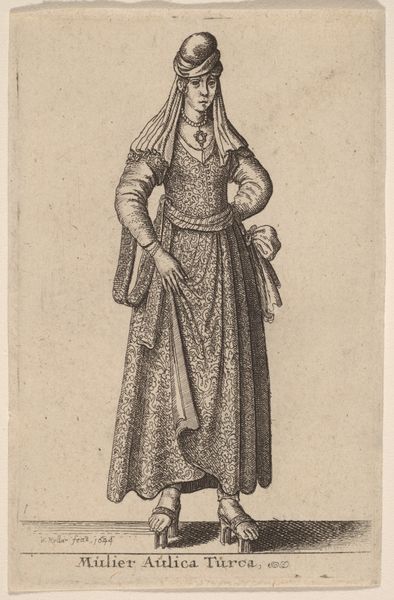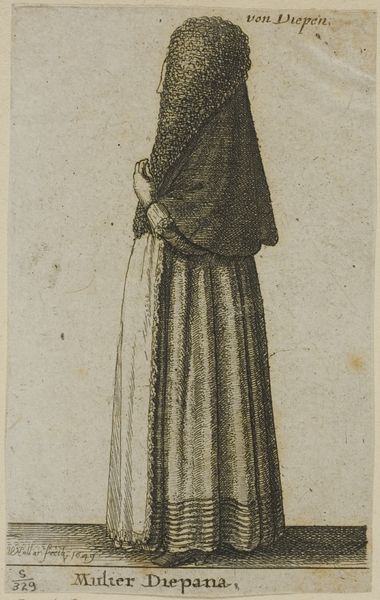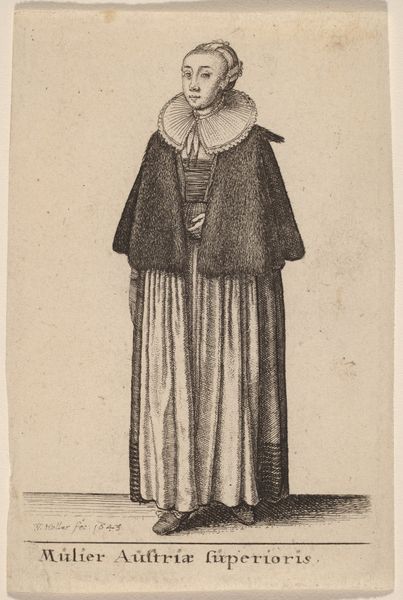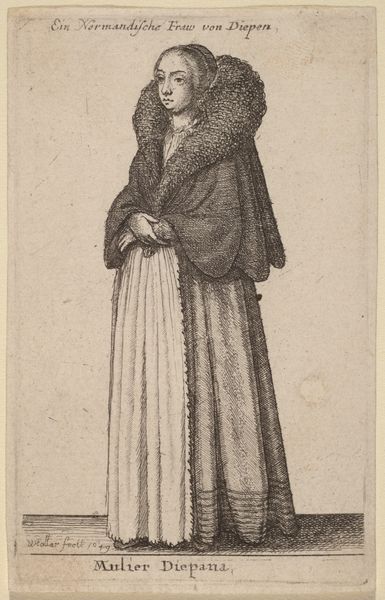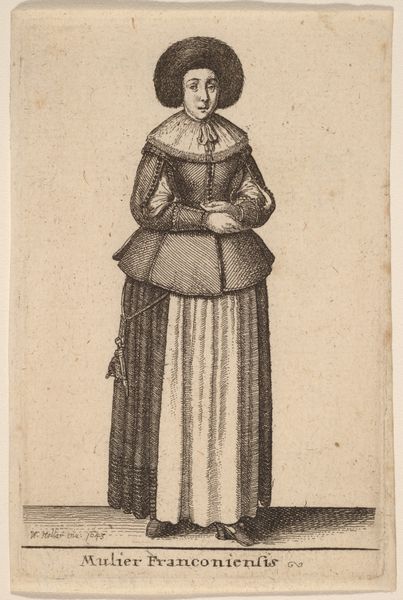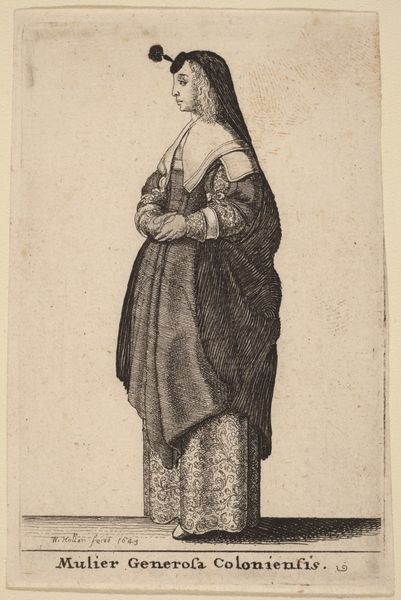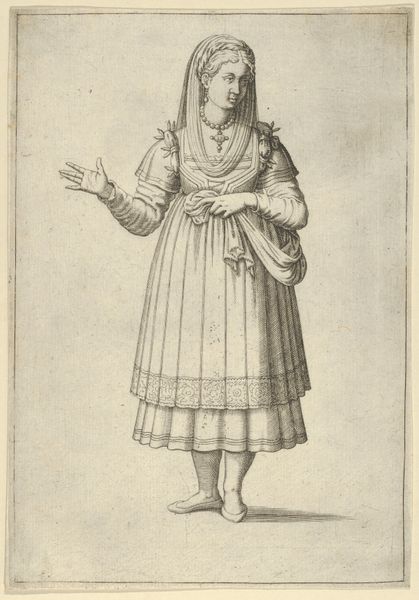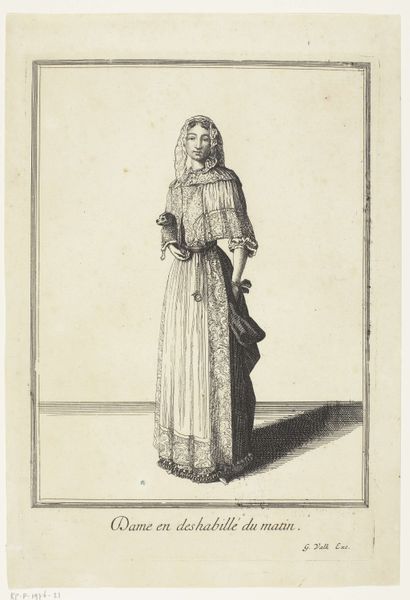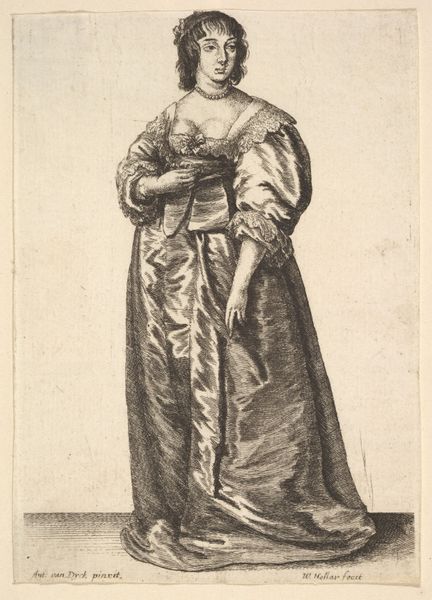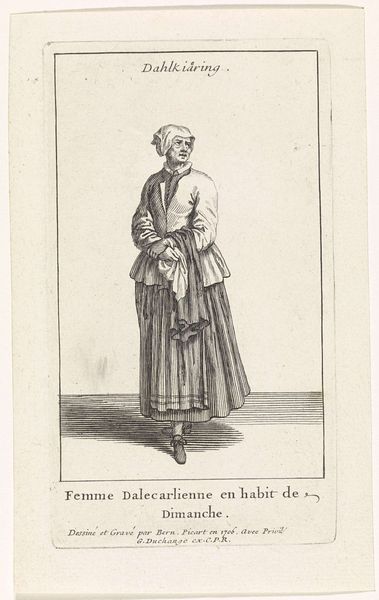
drawing, print, engraving
#
portrait
#
drawing
#
baroque
# print
#
genre-painting
#
engraving
Copyright: National Gallery of Art: CC0 1.0
Curator: Today we're looking at an engraving by Wenceslaus Hollar, entitled "Mulier Belgica in Vestitu Domestico". Editor: My first impression is of stillness. There’s a quiet formality in the way the woman poses, despite her being presented in domestic clothing. Curator: It is certainly posed, adhering to certain portrait conventions, yet Hollar imbues it with elements of genre painting through his focus on detail. The textures and patterns of her clothing, for example, communicate specific sartorial choices, class, or regional origin. Editor: Yes, it strikes me that the stark contrast in value creates distinct visual planes; the delicate lines articulating the cape are very different from the weight of the skirt. How would that difference influence its reception? Curator: I believe it speaks to how this image engages broader discussions on representation and identity during the Baroque period. These fashion plates, despite seeming documentary, often construct and perpetuate societal norms. Editor: I wonder about the implied narratives. The figure is shown with hands clasped gently; how does this quiet gesture inform our perception? There is a hint of meekness in her demure posture. Curator: Perhaps, but one can argue that it reveals certain expectations of female behavior in domestic spheres within the cultural framework that shaped Hollar’s production. Editor: Certainly, the print is both aesthetic and socio-cultural artifact. Thank you for sharing those insights, your expertise in analyzing this work from its social dimensions has been very enriching. Curator: Likewise, examining the formal strategies that were implemented truly elevated the discussion, giving us a better overall viewing experience.
Comments
No comments
Be the first to comment and join the conversation on the ultimate creative platform.
